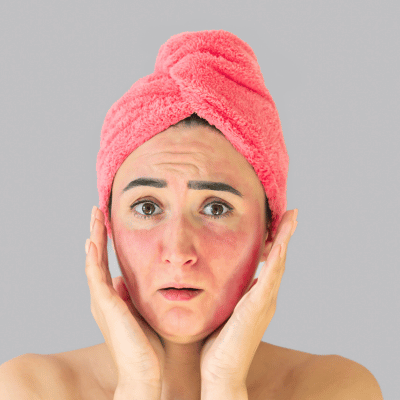Infrared Saunas vs. Traditional Saunas
Saunas promote health and well-being with traditional and infrared saunas offering unique advantages and experiences.

Saunas have been used for centuries to promote health and well-being. With the rise in wellness trends, traditional and infrared saunas have gained popularity for detoxification, relaxation and stress relief, muscle recovery and skin health.
While both types of saunas offer unique advantages, they operate differently and provide distinct experiences. In this blog post, we will explore the differences between infrared sauna vs traditional sauna, delve into specific benefits, and help you determine which type might be best suited for your needs.
Understanding Saunas
Traditional saunas use high temperatures and steam for relaxation and detoxification, while infrared saunas use lower temperatures and infrared light for a more tolerable, deeply penetrating heat.
Saunas have a long history, originating in Finland over 2,000 years ago and in other cultures such as Russia and Turkey. Back in the day, saunas were integral in social and community life where people connect with family and friends. The traditional Finnish sauna involves a small room or building heated to high temperatures using a wood-burning stove to induce sweating and relaxation.
How Traditional Saunas Work
Traditional saunas use wood, electricity or gas to heat a small, enclosed wooden room. Heat rocks are placed on the stove, which radiates warmth throughout the sauna. The temperature typically ranges from 150°F to 195°F (65°C to 90°C). Water is poured over the hot rocks to create steam increasing the humidity and intensifying heat if preferred.
Users sit on wooden benches, with higher benches offering more heat. Sessions usually last 10-20 minutes, followed by cooling down in fresh air or a cold shower. This process promotes sweating, detoxification, relaxation, and various health benefits.
How Infrared Saunas Work
Infrared saunas use infrared heaters or lamps to emit infrared light, which directly heats the body without significantly warming the surrounding air. These saunas operate at lower temperatures, typically between 120°F to 140°F (50°C to 60°C) making the experience more tolerable for those who find traditional saunas too hot.
Users sit in the sauna for 20-30 minutes while the infrared light penetrates the skin to induce sweating, detoxification, and relaxation. The lower temperature offers a deep, gentle heat ideal for longer sessions than traditional saunas. Infrared saunas are used for a myriad of health benefits including improved circulation, muscle recovery, pain relief, and enhanced skin health.
Infrared Sauna vs Traditional Sauna Health Benefits
Traditional and infrared saunas offer various health benefits from detoxification to relaxation, cardiovascular health, pain relief and skin health.
Benefits of Traditional Saunas
Traditional saunas offer numerous health benefits that have been recognized for centuries. These benefits stem from the high heat and steam that causes the body to sweat profusely. It flushes out toxins and impurities out of the body through the skin. As your body heats, your heart rate increases promoting blood flow and enhancing circulation for improved cardiovascular health.
At a glance, here are the benefits you can enjoy with a traditional sauna:
Benefits of Infrared Saunas
Like traditional saunas, Infrared saunas offer a range of health benefits but are slightly different because of the difference in heating the body. Infrared light penetrates the skin more deeply than heated air, which is believed to promote a more effective detoxification and pain relief. The lower temperatures make it easier to tolerate longer sessions, enhancing the cumulative benefits.
At a glance, here are the benefits of an infrared sauna session:
Key Differences Between Infrared and Traditional Saunas

Heating Method
The main difference between an infrared sauna vs a traditional sauna lies in the temperature and heating method. Traditional Saunas heat the air to high temperatures creating a hot environment while infrared saunas use infrared light to heat the body directly operating at lower temperatures.

Session Duration
In terms of duration, traditional saunas require shorter sessions, typically between 15 and 20 minutes, because of the intense heat. In contrast, infrared saunas allow longer sessions up to 45 minutes because of lower and more tolerable temperatures.

Energy Efficiency
Traditional Saunas may require more energy to heat the air and maintain high temperatures inside the sauna room. On one hand, infrared saunas are generally more energy-efficient because they use lower temperatures and are easier to install too.

Personal Preference
Traditional Saunas are preferred by those who enjoy intense heat and steam while those who find traditional saunas too hot or uncomfortable opt for infrared sauna sessions. In the end, the choice between these two types of sauna depends on your needs and preferences.
Which Sauna is Right for You?
Choosing between an infrared and a traditional sauna involves considering personal health goals, heat preferences, budget and space.
When choosing between an infrared and a traditional sauna, several factors should be considered to make an informed decision. First, consider your health goals. Infrared saunas are generally best for detoxification, improved circulation, pain relief, relaxation, skin health, weight loss and enhanced immune function. If you want more intense detoxification, pain relief, improved cardiovascular health and enhanced respiratory function, traditional sauna sessions can help.
Another key consideration to know which type of sauna is right for you is your heat preference. If you enjoy intense heat and steam, opt for a traditional sauna. However, an infrared sauna is highly recommended if you prefer a gentler, longer session.
Budget is another critical factor if you’re planning to install a sauna at home. Evaluate the installation cost and the ongoing energy use associated with each type of sauna. Infrared saunas tend to be more energy-efficient, which could lead to cost savings over time. Additionally, think about the space available in your home for sauna installation. Infrared saunas are often easier to install and require less space than traditional saunas.
Find the Best Fit for Your Wellness Goals
Both infrared and traditional saunas offer unique benefits and experiences. Understanding the differences between an infrared sauna vs a traditional sauna will help you decide which type is best for you based on your health goals and preferences.
Whether you choose an infrared sauna for its gentle, deep-penetrating heat or a traditional sauna for its intense, invigorating experience, incorporating sauna sessions into your wellness routine can promote relaxation, detoxification, and overall well-being. Explore further resources and consult with a wellness expert to determine the best choice for you. Start your journey towards a healthier, more fulfilling life.




















